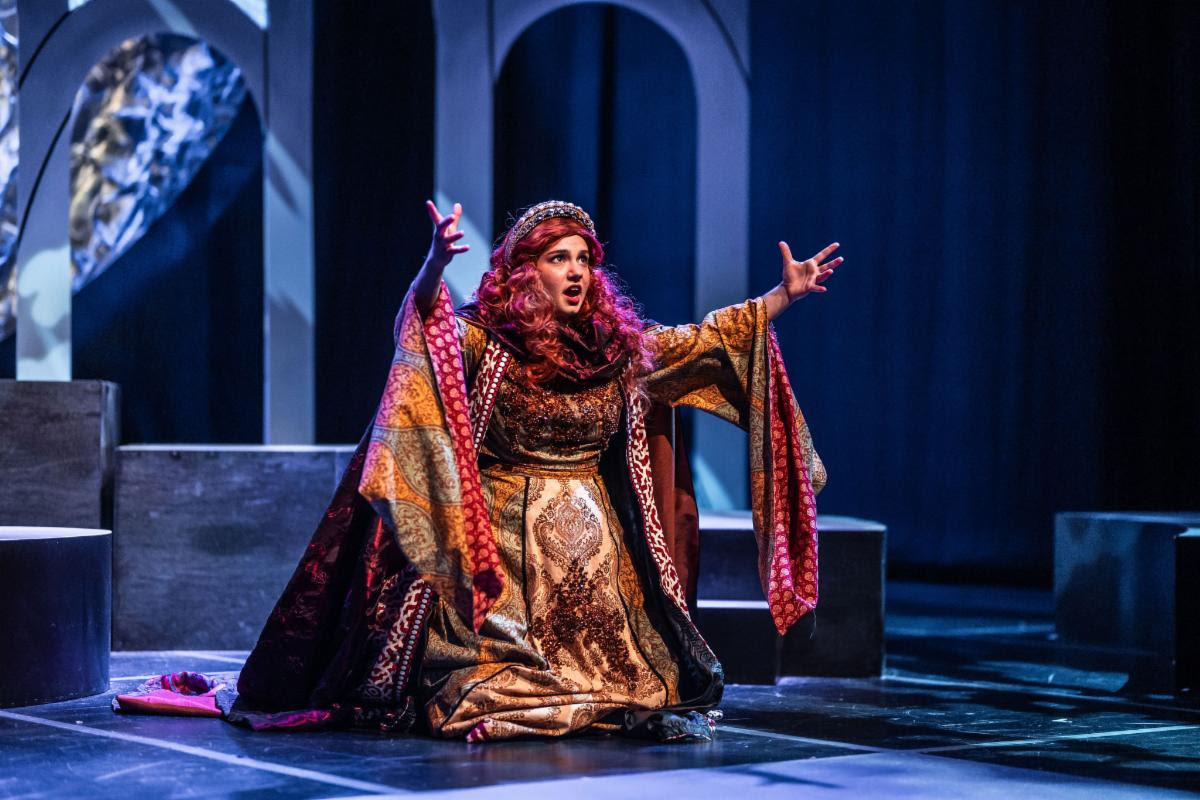by Mike Telin
This article was originally published in the Plain Dealer/Cleveland.com

Still, Hudson does think the opera’s plot is a little bizarre. The story takes place on a magical island belonging to the sorceress Alcina, who seduces every man who comes along, only to turn them into rocks or wild animals once she’s grown tired of their company.
Her most recent victim is the knight Ruggiero, which causes his fiancée Bradamante and her guardian Melisso to follow him to the island. Disguised as a man named Ricciardo, she attempts to free Ruggiero with the help of a magic ring. The plan goes astray when Alcina’s sister Morgana becomes smitten with Ricciardo and dumps her lover Oronte.
Still, Melisso somehow manages to slip the ring onto Ruggiero’s finger, causing him to see the island for what it is — a wasteland of discarded lovers. He and Bradamante plot their escape, but Alcina discovers their plan and is heartbroken because she has actually fallen in love with Ruggiero.
The opera is based on Ludovico Ariosto’s 16th-century epic poem “Orlando Furioso.” And Hudson noted that like all operatic adaptations, liberties have been taken in the libretto.
“What I find interesting is that Alcina may be a lot of things, but she’s very sincere in her love for the man that she has at any particular time. Yes, she is controlling to the point that she literally puts spells on them that almost turn them into puppies on her lap. It makes them very needy, and she attends to all those needs, but she very much loves the person that she’s captured in that moment.”
Hudson also finds it interesting that Alcina’s arias are sincere. “She grieves whenever a spell is broken, and the man doesn’t need her anymore. We still feel for her even though we know her manipulation is unacceptable to both 16th and 21st century audiences.”
Likewise, Hudson said that we feel for Ruggiero’s former lover, Bradamante, who has come to the island to rescue him. “Part of the frustration on the part of Bradamante is that Ruggiero doesn’t initially want to be rescued. And she hadn’t anticipated that at all — it wasn’t on her bingo card. She thought she was going to show up and he’d say, ‘Thank goodness you’re here.’ And of course, in operatic fashion, when the magic ring is placed on his finger he sees everything as it is. That’s the fun thing about this show — it is a fantasy.”
Hudson and his design team have also tapped into fantasy for the sets and costumes. The story is set during the time of Charlemagne, and the characters Bradamante and Melisso will be clad in 9th-century armor.
“But they come upon this magical island, and for a producer, director, and design team, that opens up all kinds of possibilities, because what does a magical island look like in any period? Since the entire show takes place on this island, I feel that what an audience sees should have some relationship to the aural landscape.”
And the visual accompaniment to the high Baroque music of Handel will be an island that is Art Nouveau-inspired. “Handel’s music is full of intertwining lines that are highly ornamented. And Art Nouveau is really ornate, with lavish curves and colors that suggest a certain magic.” The production will also include video to provide a magical element in real time — “things like vinery growing and flowers blooming.”
One question that arises with every Baroque opera production is what to do about the proliferation of da capo arias — songs where the first section is followed by a second, contrasting section, followed by a repeat of the first section.
Hudson said that he and conductor Harry Davidson made some judicious cuts — especially in sections that don’t advance the plot — but took a variety of approaches with the da capos.
“There are only three or four numbers where we’re doing the full arias. Most of the time we’re only doing the A sections, but there is one instance where we’re only doing the B section. That’s really fun and kind of strange, but it is a fantasy island. For people who know the show’s arias, the crowning jewel is Alcina’s 11-minute “Ah, mio cor!” which she’s singing in full.” The show has a running time of just under three hours including a 15-minute intermission.
As a stage director, Hudson said that working with Harry Davidson has been a pleasure. “One reason I’m in opera is that I love collaboration. When you work in opera there are two of you leading the production and making choices — it’s a team. We each have our areas, and I know that Harry cares about my area, and I care very much about his. He cares about musical integrity — as do I — and making sure that the cuts are not ruining the architecture of the piece.”
Hudson looks forward to the performances by the two wonderful casts. “They’ve been an absolute joy to work with. And as always, the CIM vocal faculty have been just wonderful allies in this process.”
CIM Opera Theater presents Handel’s Alcina at 7:30 p.m. Friday, November 17, and 3 p.m. Sunday, November 19, at Kulas Hall, 11021 East Boulevard, Cleveland. JJ Hudson directs and Harry Davidson conducts the CIM Orchestra. Tickets are available online.
Mike Telin serves as Executive Editor at ClevelandClassical.com. Additionally, he team-teaches classes in Music Journalism at Oberlin College and Conservatory.
Published on ClevelandClassical.com November 13, 2023.
Click here for a printable copy of this article



